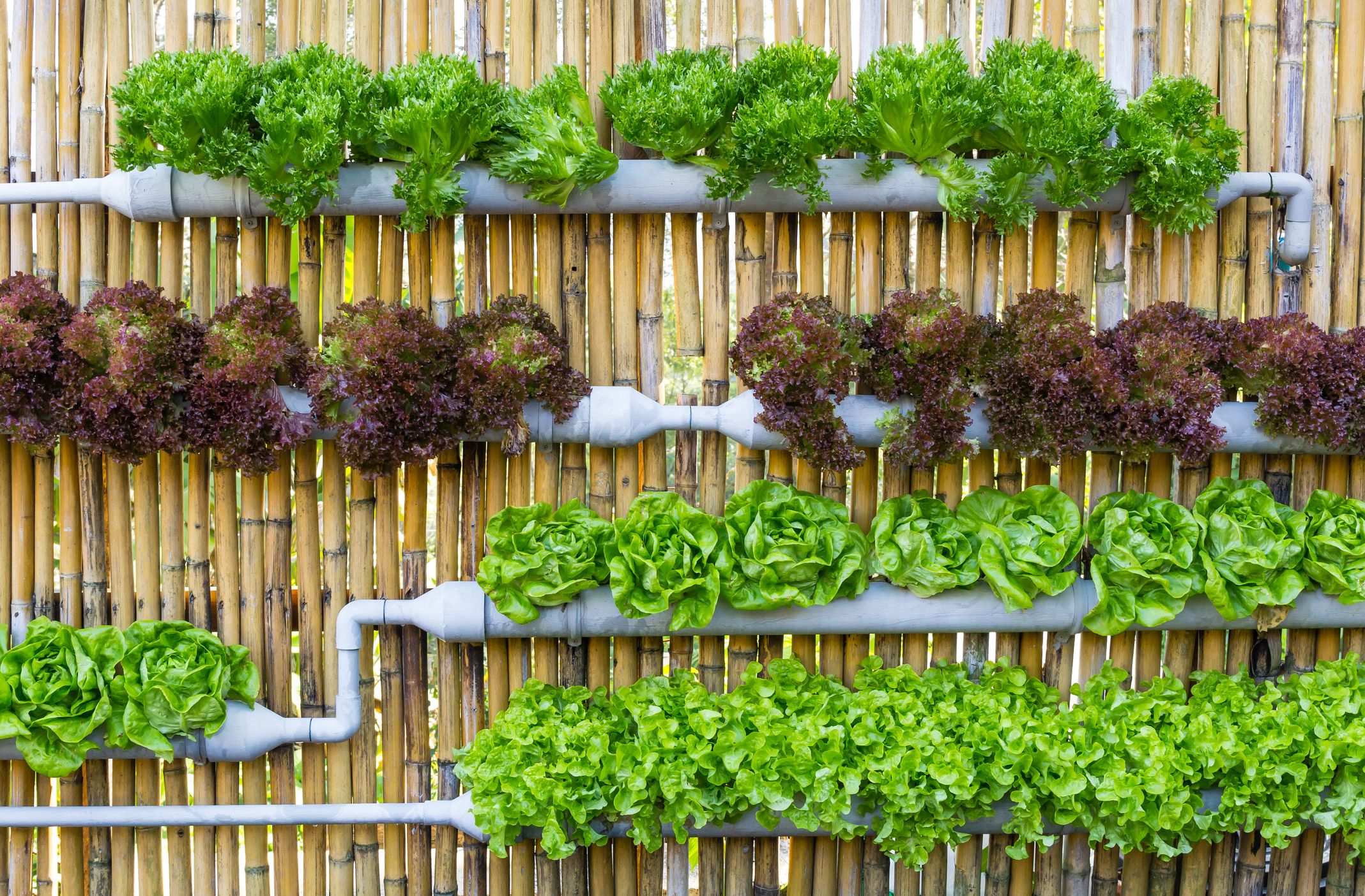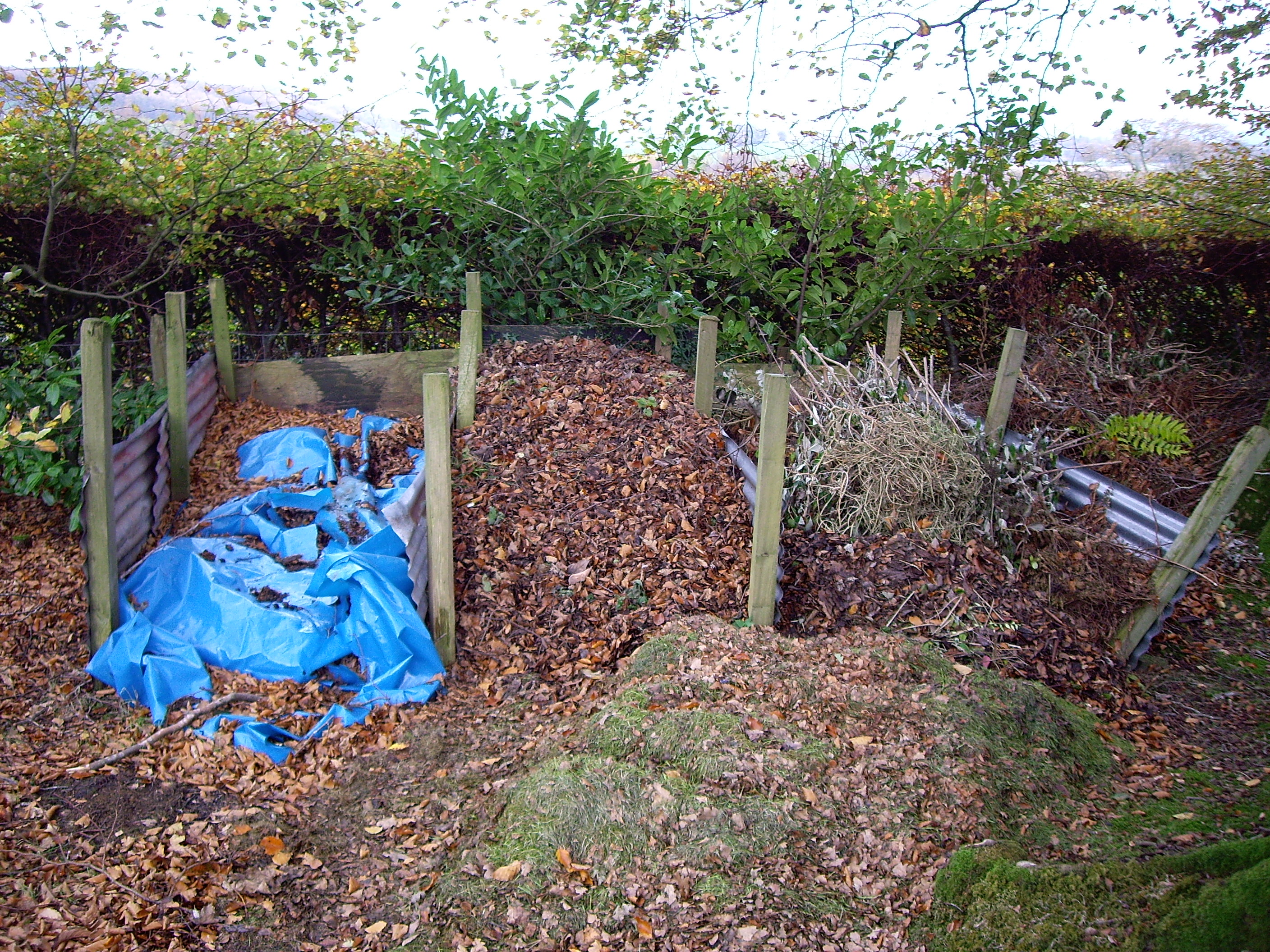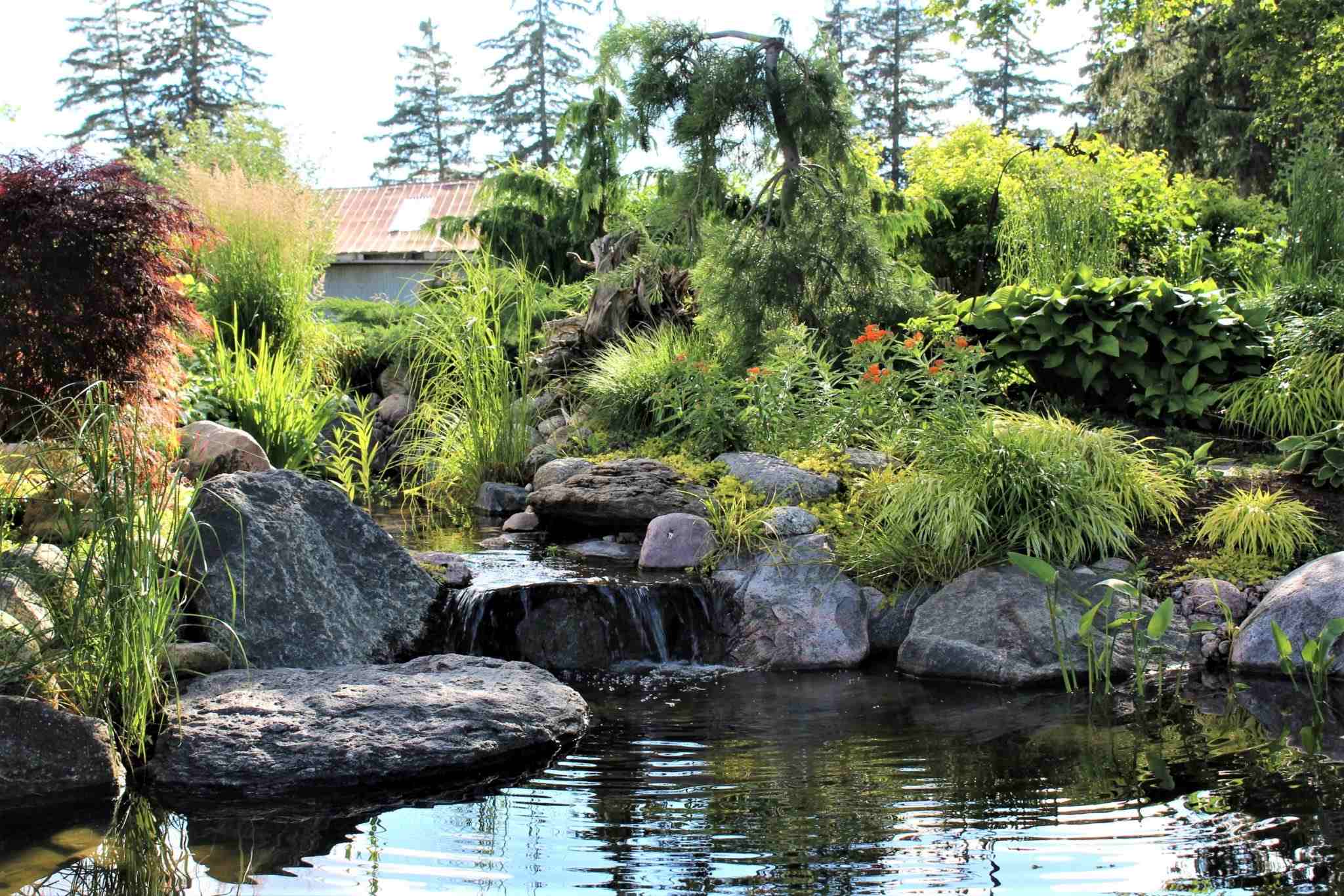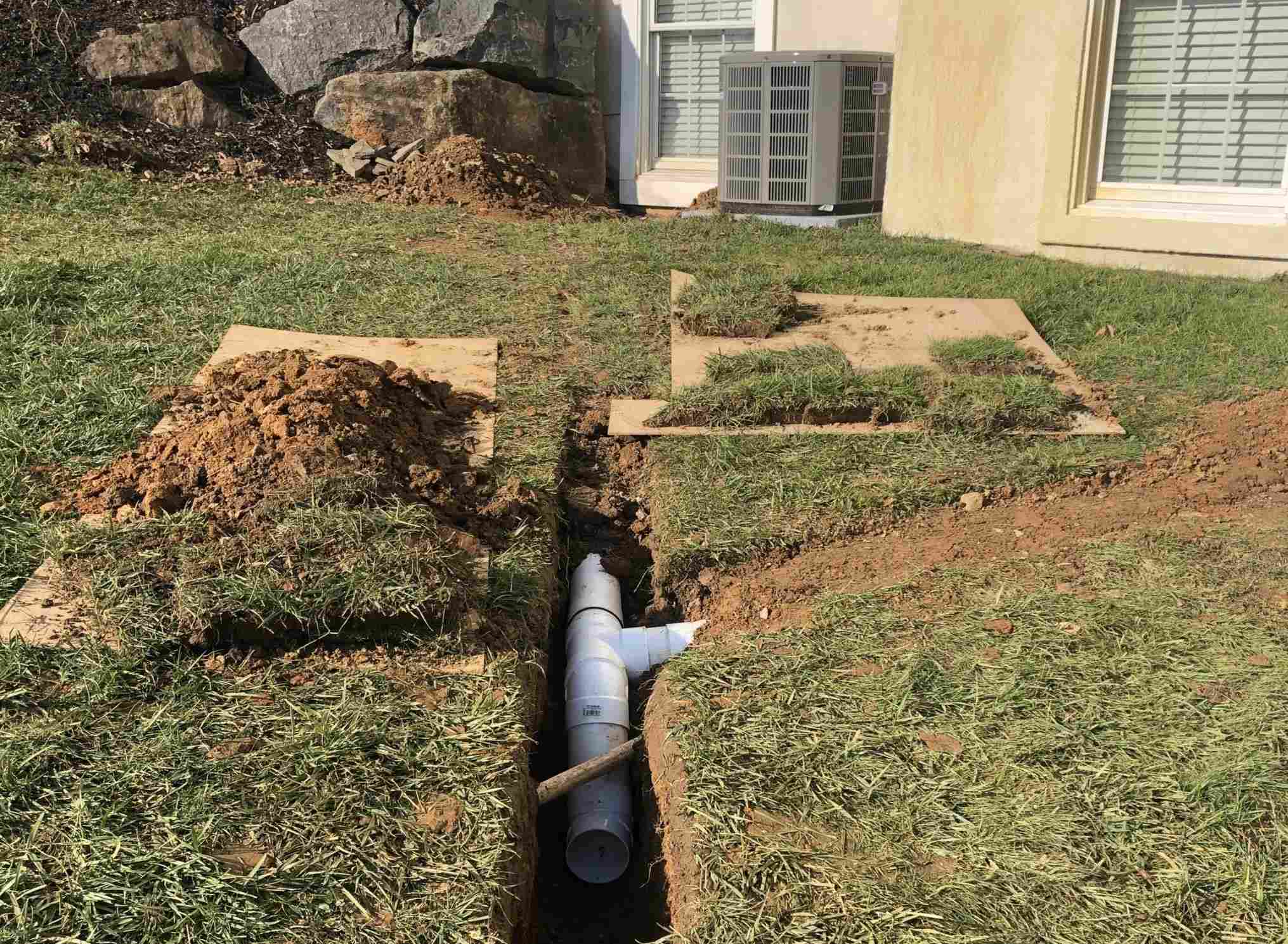Home>Gardening Tips and Tricks>Eco-Friendly Gardening>How To Make Hydroponics


Eco-Friendly Gardening
How To Make Hydroponics
Modified: January 22, 2024
Learn how to create an eco-friendly garden with hydroponics. Discover the benefits of hydroponic gardening and start growing your own plants efficiently and sustainably.
(Many of the links in this article redirect to a specific reviewed product. Your purchase of these products through affiliate links helps to generate commission for Chicagolandgardening.com, at no extra cost. Learn more)
Table of Contents
- Introduction
- What is Hydroponics?
- Benefits of Hydroponics
- Getting Started with Hydroponics
- Choosing a Hydroponic System
- Setting up Your Hydroponic System
- Selecting the Right Plants for Hydroponics
- Providing Nutrients for Your Hydroponic Garden
- Monitoring and Maintaining Your Hydroponic System
- Troubleshooting Common Issues in Hydroponics
- Harvesting and Enjoying Your Hydroponic Plants
- Conclusion
Introduction
Welcome to the world of hydroponics, a fascinating and eco-friendly method of gardening that is gaining popularity among gardening enthusiasts and sustainable living advocates. Hydroponics offers a unique way to cultivate plants without soil, using nutrient-rich water solutions instead. By understanding its principles and techniques, you can create your own thriving indoor garden and grow a variety of plants all year round.
In this article, we will explore the wonderful world of hydroponics and guide you through the process of setting up your own hydroponic system. We will cover the benefits of hydroponics, the different types of hydroponic systems available, selecting the right plants for your hydroponic garden, providing nutrients, and the maintenance required to ensure your plants flourish.
Whether you have limited space for a traditional garden, want to conserve water, or simply want to explore an innovative gardening approach, hydroponics offers an exciting alternative. By harnessing the power of water and nutrients, hydroponic gardening allows plants to grow faster and more efficiently, resulting in higher yields and healthier produce.
In addition to the practical benefits, hydroponics is also an environmentally friendly gardening method. It reduces the need for pesticides and herbicides, eliminates soil erosion concerns, and conserves water by recycling and reusing the nutrient solution. By adopting hydroponics at home, you can contribute to sustainable gardening practices and minimize your carbon footprint.
So, whether you’re a seasoned gardener looking to expand your horticultural endeavors or a beginner eager to explore a new green thumb hobby, join us as we dive into the exciting world of hydroponics. Get ready to grow an abundance of fresh, delicious produce while exploring innovative and sustainable gardening techniques.
What is Hydroponics?
Hydroponics is a method of gardening that involves growing plants in a soilless medium, with their roots submerged in a nutrient-rich water solution. Instead of relying on soil for nutrient uptake, plants receive all the essential elements they need for growth directly through the water. This allows for precise control over plant nutrition and eliminates many of the challenges associated with traditional soil-based gardening.
The word “hydroponics” is derived from the Greek words “hydro” meaning water and “ponos” meaning labor. This method of cultivation dates back to ancient times when the Hanging Gardens of Babylon showcased the amazing ability of plants to thrive in a water-based environment.
Hydroponics systems come in various forms, ranging from simple setups for home use to large-scale commercial operations. The underlying principle is the same – providing plants with the necessary nutrients in a balanced, readily available form, and ensuring the proper oxygenation of the root zone.
One of the main advantages of hydroponics is the ability to grow plants in any location, regardless of the soil quality or climate conditions. This makes hydroponics particularly beneficial for urban gardening, where space is limited, or in regions with extreme weather conditions.
Additionally, hydroponics allows for faster growth rates and higher yields compared to traditional soil-based gardening. Plants grown hydroponically have constant access to the nutrients they need, resulting in healthier and stronger plants. The controlled environment also minimizes the risk of pests and diseases and reduces the need for chemical interventions, making hydroponics an eco-friendly gardening solution.
Furthermore, hydroponics is a water-efficient method of cultivation. The water used in the system is recirculated, reducing water consumption by up to 90% compared to traditional soil-based gardening. This makes it an ideal choice for regions experiencing water scarcity or for gardeners looking to minimize their water usage.
Now that we have a better understanding of what hydroponics is, let’s explore the numerous benefits it offers and how you can get started with your own hydroponic garden.
Benefits of Hydroponics
Hydroponics offers a multitude of advantages over traditional soil-based gardening, making it an increasingly popular choice among gardening enthusiasts. Let’s explore some of the key benefits of hydroponics:
- Optimal use of space: Hydroponics allows you to make the most efficient use of space, making it an ideal solution for urban gardeners or those with limited gardening areas. Vertical hydroponic systems, in particular, maximize space utilization by stacking plant layers, allowing you to grow more plants in a smaller footprint.
- Water efficiency: Hydroponics is a water-saving method of gardening, using up to 90% less water compared to traditional soil-based gardening. The recirculating system minimizes water wastage, making it an eco-friendly choice for gardeners concerned about water conservation.
- No soil-borne pests or diseases: Since hydroponics eliminates the need for soil, it greatly reduces the risks associated with soil-borne pests and diseases. This means you can grow your plants without the worry of harmful insects or harmful pathogens taking over your garden.
- Increased plant growth and yield: By providing plants with a well-balanced nutrient solution directly to their root systems, hydroponics promotes faster growth and higher yields. Plants have access to the nutrients they need when they need them, resulting in healthier and more productive plants.
- Year-round gardening: With hydroponics, you can enjoy gardening and harvest fresh produce year-round, regardless of the climate or season. By controlling the growing environment, you can provide optimal conditions for plant growth and extend the growing season beyond traditional limits.
- Reduced pesticide use: Hydroponics reduces the need for pesticides and herbicides since the controlled environment minimizes the risk of pests and weeds. This not only benefits the environment but also promotes healthier, chemical-free produce.
- Resource conservation: Hydroponics uses less water, requires no soil or tilling, and eliminates the need for synthetic fertilizers. This approach conserves resources, reduces soil erosion, and minimizes the environmental impact associated with traditional gardening methods.
These are just a few of the many benefits offered by hydroponics. Whether you are a seasoned gardener looking to optimize your gardening space or a newbie eager to explore a sustainable and efficient gardening method, hydroponics provides a wealth of advantages that can enhance your gardening experience. Let’s delve into the next section to understand how you can get started with hydroponics and create your own thriving indoor garden.
Getting Started with Hydroponics
If you’re ready to embark on your hydroponic gardening journey, there are a few key steps to consider. Let’s explore how you can get started with hydroponics:
1. Research and Planning:
Before diving into hydroponics, take the time to research and familiarize yourself with the different types of hydroponic systems available. Consider factors such as space availability, budget, and your specific gardening goals. This research will help you make informed decisions and choose the best system for your needs.
2. Set up Your Growing Space:
Choose a suitable location for your hydroponic system. It can be a spare room, garage, basement, or even a dedicated space in your backyard. Ensure the area has access to electricity, proper ventilation, and a stable temperature. Adequate lighting is crucial for plant growth, so consider installing appropriate grow lights if natural light is insufficient.
3. Select Your Hydroponic System:
There are several hydroponic systems to choose from, such as Deep Water Culture (DWC), Nutrient Film Technique (NFT), or Ebb and Flow. Each system has its own pros and cons, so select one that aligns with your space, budget, and gardening goals. Consider factors like complexity, ease of maintenance, and the types of plants you want to grow.
4. Gather Your Materials:
Once you’ve chosen your hydroponic system, gather the necessary materials. This may include containers or trays, an air pump and air stones for oxygenation, growing media (like perlite or rockwool cubes), pH testing kit, nutrient solutions, and a timer for automated feeding cycles. Ensure you have all the components before proceeding with setup.
5. Build and Set up Your System:
Follow the instructions provided with your chosen hydroponic system to assemble and set it up. Pay attention to details such as nutrient circulation, water levels, and light positioning. Ensure the system is properly sealed to prevent leaks and provide adequate support for your plants as they grow.
6. Start with Starter Plants or Seeds:
Choose plants that are well-suited for hydroponic cultivation. Leafy greens like lettuce, herbs, and tomatoes are popular choices. Start with either seedlings or seeds, depending on your experience and preference. Follow the recommended planting and germination instructions specific to the plants you’ve chosen.
7. Monitor and Maintain Your System:
Regularly monitor the water levels, pH levels, and nutrient concentration in your hydroponic system. Adjust these parameters as needed to ensure optimal growing conditions. Maintain cleanliness in your system to prevent the buildup of algae or pathogens that could harm your plants. Regularly check for signs of pests or diseases and take appropriate measures to control them.
By following these steps, you’ll be on your way to creating a successful hydroponic garden. Remember, each system may have its unique requirements and nuances, so always refer to the manufacturer’s instructions and seek additional resources or guidance as needed. With proper planning and care, your hydroponic garden will flourish, allowing you to enjoy the benefits of year-round fresh produce.
Choosing a Hydroponic System
When it comes to hydroponics, choosing the right system is crucial for the success of your gardening venture. There are various types of hydroponic systems to consider, each with its own set of advantages and considerations. Let’s explore some key factors to help you make an informed decision:
1. Space Availability:
Assess the available space you have for your hydroponic system. If you have limited space, consider vertical hydroponic systems that maximize vertical growth, such as tower gardens or vertical NFT setups. If space is not an issue, you can opt for larger systems like Ebb and Flow or Deep Water Culture (DWC).
2. Budget:
Determine your budget for setting up the hydroponic system. Some systems, such as simple DWC setups, are more cost-effective for beginners, while others, like commercial NFT systems or aeroponic systems, may require a larger investment. Consider your long-term gardening goals and allocate your budget accordingly.
3. Complexity and Skill Level:
Consider your experience and skill level in gardening. Some hydroponic systems, like DWC or NFT, are relatively simple and beginner-friendly, while others, such as aeroponics, may require more technical knowledge. Start with a system that matches your skill level and gradually explore more advanced options as you gain confidence and experience.
4. Types of Plants:
Think about the types of plants you want to grow in your hydroponic system. Some systems are better suited for specific plants. For example, NFT systems are well-suited for leafy greens and herbs, while DWC systems are versatile and can accommodate a wide variety of plants. Consider your preferred plant selection and choose a system that supports their growth requirements.
5. Maintenance and Time Commitment:
Different hydroponic systems have varying maintenance requirements. Some systems are more automated and require less day-to-day involvement, while others may require more frequent monitoring and adjustments. Consider the time you can dedicate to maintaining your system and choose a system that aligns with your availability and gardening preferences.
6. Environmental Factors:
Take into account the environmental conditions of your growing space. Some systems, such as aeroponics or high-pressure aeroponics, may require precise temperature and humidity control. Ensure that your chosen system can work within the climatic conditions of your growing area to provide the optimal environment for your plants.
By carefully considering these factors, you can select a hydroponic system that best suits your needs and preferences. Remember, each system has its own advantages and considerations, so research thoroughly and seek advice from experienced hydroponic gardeners or professionals to make an informed decision. With the right system in place, you’ll be well on your way to creating a thriving and bountiful hydroponic garden.
Setting up Your Hydroponic System
Once you have chosen the appropriate hydroponic system for your needs, it’s time to set it up and prepare it for successful plant growth. Follow these steps to ensure a smooth and efficient setup of your hydroponic system:
1. Assemble Your Hydroponic System:
Carefully follow the manufacturer’s instructions to assemble your hydroponic system. This may involve connecting tubes, pumps, and reservoirs, as well as securing the growing containers or trays. Pay attention to details such as proper sealing of connections to prevent leaks.
2. Prepare the Growing Medium:
Depending on the type of hydroponic system you have chosen, you will need to prepare the appropriate growing medium. Common options include perlite, rockwool, coco coir, or clay pellets. Rinse the growing medium if required, and ensure it is clean and free from debris before placing it in your growing containers or trays.
3. Mix the Nutrient Solution:
Prepare the nutrient solution according to the instructions provided by the manufacturer or as recommended for your selected plants. Measure and mix the appropriate amounts of nutrients and water to create a well-balanced solution. Use a pH testing kit to ensure your nutrient solution is within the optimal pH range for hydroponic cultivation, typically around 5.5 to 6.5.
4. Fill the Reservoir:
Fill the reservoir of your hydroponic system with the prepared nutrient solution. Ensure that it is filled to the appropriate level as indicated by the system’s specifications or instructions. Some systems may require you to top up the reservoir periodically as water is absorbed by the plants or evaporates.
5. Install Lighting:
If you are growing plants indoors or in an area with insufficient natural light, install appropriate grow lights to provide the necessary light spectrum for plant photosynthesis. Position the lights at the correct distance from the plants to ensure optimum light intensity and avoid burning the foliage.
6. Transplant or Start Seeds:
If you are starting from seeds, germinate them according to the instructions specific to your chosen plants. Once the seedlings have grown to a suitable size, carefully transplant them into the prepared growing medium, ensuring their roots are fully submerged in the nutrient solution. If using pre-grown seedlings, gently place their root systems into the growing medium.
7. Set Up Timers and Monitoring Systems:
If your hydroponic system includes timers or automated systems, set them up according to the manufacturer’s instructions. This ensures that the pumps, lights, and other environmental controls are functioning correctly and operating on the desired schedule. Install monitoring systems for tracking important parameters such as pH levels, temperature, and nutrient concentration.
8. Start the System and Monitor:
Switch on your hydroponic system and observe its functioning to verify that everything is working properly. Monitor the system daily, checking the water levels, nutrient solution pH, and plant health. Make adjustments as needed, ensuring the nutrient solution remains within the optimal range and performing regular maintenance tasks, such as cleaning filters or replacing old nutrient solutions.
With your hydroponic system properly set up, you are ready to embark on your hydroponic gardening journey. Regularly monitor and maintain your system to create the best possible environment for your plants to thrive. Stay tuned for the next sections, where we will delve into selecting the right plants, providing nutrients, monitoring system health, troubleshooting common issues, and enjoying the fruits of your hydroponic gardening efforts.
Selecting the Right Plants for Hydroponics
One of the advantages of hydroponics is the ability to grow a wide variety of plants, from leafy greens and herbs to fruiting plants and flowers. However, some plants are better suited for hydroponic cultivation than others. When selecting plants for your hydroponic garden, consider the following factors to ensure success:
Growth Type:
Determine whether the plants you are considering are suitable for the hydroponic environment. Leafy greens, such as lettuce, kale, and spinach, are excellent choices for hydroponics due to their rapid growth and shallow root systems. Herbs, such as basil, mint, and parsley, also thrive in hydroponic setups. Fruit-bearing plants like tomatoes, cucumbers, and peppers can be grown hydroponically but may require more complex systems and additional support.
Space Requirements:
Consider the space available in your hydroponic system. Some plants, like leafy greens, can be grown quite densely, allowing for high yields in a limited area. Others, like fruiting plants, require more space for their roots to spread and produce a bountiful harvest. Be mindful of the recommended spacing requirements of the plants you choose to ensure adequate light, airflow, and nutrient uptake.
Nutrient Requirements:
Different plants have specific nutrient requirements, and it’s essential to choose plants that have similar nutritional needs if you plan to grow them together. For example, leafy greens typically thrive in nutrient solutions with higher nitrogen levels, while fruiting plants require a balanced nutrient solution with appropriate levels of potassium and phosphorus. Be sure to provide the correct nutrients and maintain proper pH levels to support healthy plant growth.
Growth Characteristics:
Consider the growth habits of the plants you wish to grow. Some plants, like vining tomatoes or cucumbers, may require trellising or support structures to prevent them from toppling over as they grow. Compact or bushy plants, such as herbs, may be easier to manage in smaller hydroponic systems. Understanding the growth characteristics of your chosen plants will help you plan and set up your hydroponic system accordingly.
Climate Adaptability:
Hydroponics allows you to create a controlled environment for your plants, independent of external weather conditions. However, certain plants may have specific climate preferences. Some thrive in warmer temperatures, while others prefer cooler conditions. Choose plants that can thrive in the temperature range you can provide within your hydroponic setup to ensure optimal growth and yield.
Personal Preferences:
Finally, consider your own preferences when selecting plants for your hydroponic garden. Choose plants that you enjoy eating or that are in high demand in your household. Growing plants that you love and use regularly will make the gardening experience more enjoyable and rewarding.
By considering these factors, you can select the right plants for your hydroponic garden and create an environment where they can thrive. Remember to start with plants that are well-suited for hydroponic cultivation, and as you gain experience and confidence, you can experiment with a wider array of plants to expand your hydroponic garden’s diversity and bounty.
Providing Nutrients for Your Hydroponic Garden
In hydroponics, providing a well-balanced nutrient solution is essential for the health and productivity of your plants. Since they are not grown in soil, it’s necessary to supply all the necessary nutrients directly to the roots through the water. Here are some key considerations for providing nutrients to your hydroponic garden:
Nutrient Solutions:
A nutrient solution contains a balanced blend of macro and micronutrients that plants need for healthy growth. These solutions are available commercially, specifically formulated for hydroponic cultivation. Follow the instructions provided by the manufacturer to mix the nutrient solution accurately. They typically require dilution with water to reach the desired strength before adding it to your hydroponic system.
Macronutrients:
Macronutrients, including nitrogen (N), phosphorus (P), and potassium (K), are required by plants in large quantities. These elements play a crucial role in plant development, such as promoting leaf growth, root development, and fruit production. Ensure the nutrient solution contains appropriate levels of each macronutrient, as specified for the specific growth stage of your plants.
Micronutrients:
In addition to macronutrients, plants also require various micronutrients, such as iron (Fe), manganese (Mn), zinc (Zn), and copper (Cu), in smaller quantities. These essential elements are involved in various metabolic processes, enzyme activations, and overall plant health. Check that your chosen nutrient solution includes the necessary micronutrients for optimal plant growth.
pH Balance:
Maintaining the proper pH level is crucial for nutrient absorption and plant health. Most plants thrive in a slightly acidic to neutral pH range between 5.5 and 6.5. Regularly test the pH of your nutrient solution and make adjustments as necessary using pH-up or pH-down solutions. Maintaining the correct pH ensures that nutrients are readily available for uptake by the plants.
Feeding Schedule:
Establish a feeding schedule based on the specific needs of your plants. Some hydroponic systems require continuous nutrient circulation, while others have specific feeding intervals. Generally, it is recommended to start with shorter feeding cycles and gradually increase the duration as your plants grow. Monitor your plants’ growth and adjust the feeding schedule accordingly to avoid nutrient deficiencies or excesses.
System Monitoring:
Regularly monitor the nutrient levels in your hydroponic system to ensure they remain within the optimal range for plant growth. Use a nutrient monitoring device or testing kit to measure the nutrient concentration. Adjust the nutrient solution strength or dilution levels as needed to maintain the required balance. Also, keep an eye on your plants for any signs of nutrient deficiencies, such as yellowing leaves or stunted growth, and make the necessary adjustments promptly.
By providing the right nutrients in the proper balance and maintaining optimal pH levels, you can ensure healthy growth and abundant harvests in your hydroponic garden. Regularly monitoring your system’s nutrient levels and making necessary adjustments will help create an environment where your plants can thrive and flourish.
Monitoring and Maintaining Your Hydroponic System
To ensure the success of your hydroponic garden, it is crucial to monitor and maintain your hydroponic system regularly. By staying vigilant and proactive, you can prevent potential issues and create an optimal environment for the health and productivity of your plants. Here are some key aspects of monitoring and maintaining your hydroponic system:
1. Nutrient Solution:
Regularly monitor the nutrient solution in your hydroponic system to ensure that it remains at the optimal strength and pH level. Check the nutrient levels according to the recommended schedule and adjust the concentration as needed. Maintain proper pH levels to facilitate nutrient uptake by the plants.
2. Water Levels:
Check the water levels in your hydroponic system daily, particularly in recirculating systems. Ensure that the water is at the appropriate level to submerge the roots or reach the necessary level for the specific hydroponic system you are using. Adjust the water levels as needed to maintain optimal growing conditions for the plants.
3. Light and Temperature:
Monitor the light levels and temperature in your hydroponic garden regularly. Ensure that the plants receive the appropriate amount of light for their specific requirements, whether from natural sunlight or artificial grow lights. Ensure that the temperature remains within the ideal range for the plants you are cultivating to avoid stress or damage.
4. Pest and Disease Control:
Regularly inspect your plants for signs of pests or diseases. Common pests in hydroponics include aphids, whiteflies, and spider mites. Take preventive measures, such as maintaining a clean growing environment and applying organic pest control methods when necessary. Promptly address any pest or disease issues to prevent them from spreading and causing damage to your plants.
5. Water Quality:
Monitor the quality of the water you use in your hydroponic system. Water high in chlorine or other impurities might have a negative impact on plant health. Consider using filtered water or treating tap water before using it in your hydroponic system. Test the water quality periodically to ensure it remains suitable for your plants.
6. System Cleaning:
Maintain cleanliness in your hydroponic system to prevent the growth of algae, bacterial or fungal infections, and clogs. Regularly clean the system components, including grow trays, containers, and tubing. Sterilize any reusable materials between growing cycles to eliminate any potential pathogens and maintain a healthy growing environment.
7. Plant Care and Pruning:
Provide appropriate care for your plants, including regular pruning and trimming. Remove any dead or diseased leaves to prevent the spread of diseases and maintain good airflow. Support taller plants with staking or trellising systems to prevent them from toppling over as they grow. Regularly inspect plants for nutrient deficiencies or imbalances and take corrective actions promptly.
By diligently monitoring and maintaining your hydroponic system, you can proactively address any issues and create optimal conditions for the health and productivity of your plants. Regular observations, adjustments, and preventive care will contribute to the long-term success and enjoyment of your hydroponic garden.
Troubleshooting Common Issues in Hydroponics
While hydroponics offers numerous benefits, like any gardening method, it is not without its challenges. However, with some troubleshooting techniques, you can overcome common issues that may arise in your hydroponic system. Here are some common problems and their potential solutions:
1. Nutrient Deficiencies:
Symptoms of nutrient deficiencies, such as yellowing leaves or stunted growth, may indicate an imbalance or lack of specific nutrients. Check the nutrient solution levels and adjust accordingly to ensure that your plants are receiving the appropriate nutrients in the correct ratios. Conduct regular nutrient solution testing and consult a nutrient deficiency guide to identify and address any deficiencies.
2. pH Imbalance:
Fluctuations in pH levels can affect nutrient availability and plant health. Check the pH levels of your nutrient solution regularly and make necessary adjustments using pH-up or pH-down solutions. Maintain a pH range suitable for the specific plants you are growing to facilitate proper nutrient uptake.
3. Overwatering or Underwatering:
Improper water levels in your hydroponic system can lead to root rot or dehydration. Maintain the appropriate water level to prevent roots from sitting in stagnant water or drying out. Monitor the water levels regularly and adjust as needed to ensure optimal growing conditions for your plants.
4. Algae Growth:
Algae growth can result from excessive light exposure or inadequate system cleanliness. Ensure that your hydroponic system is properly covered to reduce light penetration, minimizing algae growth. Clean and sterilize your system components regularly to prevent the buildup of algae and other pathogens.
5. Pest Infestations:
Pests such as aphids, whiteflies, or spider mites can pose threats to your hydroponic garden. Implement preventive measures, such as maintaining a clean growing environment and using insecticidal soaps or natural predators, to control pests. Regularly inspect your plants for signs of infestation and take appropriate action if pests are detected.
6. Temperature and Humidity Fluctuations:
Extreme temperature or humidity changes can stress plants and affect their growth. Ensure adequate ventilation and airflow to maintain a stable environment for your plants. Use fans or air conditioning to regulate temperature and humidity levels as necessary.
7. Insufficient Lighting:
Inadequate lighting can result in weak or spindly plant growth. Ensure that your plants receive the appropriate amount and intensity of light for their growth stage. If using artificial lighting, position the lights at the correct distance to provide adequate coverage and intensity.
8. Disease Outbreaks:
Disease outbreaks can occur if proper hygiene and plant care practices are not followed. Maintain a clean growing environment, regularly clean and sterilize your systems, and promptly remove any diseased plants to prevent the spread of pathogens. If necessary, use organic or chemical treatments to control diseases.
It’s important to note that troubleshooting in hydroponics requires careful observation and timely intervention. Regular monitoring, attention to detail, and quick action can help prevent and resolve issues, ensuring the health and productivity of your hydroponic crops. Utilize available resources, consult experienced gardeners, and continuously educate yourself to overcome challenges and enjoy a thriving hydroponic garden.
Harvesting and Enjoying Your Hydroponic Plants
The time has finally come to reap the rewards of your hard work in your hydroponic garden. Harvesting your plants and enjoying the fresh produce is a satisfying and gratifying experience. Here are some tips to help you make the most of your harvest:
Timing:
Pay attention to the growth cycle and maturity of your plants. Each plant has different harvesting times, so familiarize yourself with the specific growth requirements and harvest indicators for each crop you are growing. Harvesting at the right time ensures the best flavor, texture, and nutritional value of your produce.
Harvesting Techniques:
When harvesting leafy greens, herbs, or microgreens, use clean and sharp scissors or pruning shears to avoid damaging the plant and ensuring a clean cut. For fruiting plants such as tomatoes or cucumbers, gently twist or cut the fruits from the stem when they are fully ripe. Be mindful not to disturb the plants or damage their neighboring crops during the harvesting process.
Post-Harvest Handling:
Proper post-harvest handling is crucial to maintain the quality and freshness of your harvested produce. Immediately after harvesting, gently clean the produce by rinsing them with water if necessary, removing any dirt or debris. Dry the harvested plants or fruits gently to prevent excess moisture, which can lead to spoilage. Store them in a cool and dry place or consume them soon after harvesting to enjoy the optimum flavor and nutritional value.
Culinary Delights:
Now that you have your freshly harvested produce, it’s time to unleash your culinary creativity. Incorporate your homegrown hydroponic herbs, leafy greens, and vegetables into salads, stir-fries, soups, or smoothies. Experiment with your favorite recipes or discover new flavors using your freshly harvested bounty. The vibrant colors, intense flavors, and nutritional benefits of your homegrown produce will undoubtedly enhance your culinary experiences.
Continual Harvesting:
In hydroponics, you can enjoy the benefits of continual harvesting. For leafy greens, harvest outer leaves while allowing the inner leaves to continue growing. This practice encourages new growth and extends your harvesting period. With strategic planting and careful rotation, you can ensure a continuous supply of fresh homegrown produce.
Sharing the Bounty:
If your hydroponic garden provides an abundant harvest, consider sharing your fresh produce with friends, family, or neighbors. Spread the joy of homegrown goodness by giving away some of your hydroponically grown crops. Sharing your harvest not only fosters community connections but also promotes the benefits of sustainable gardening and locally sourced food.
By following these tips and savoring the fruits of your hydroponic labor, you can fully enjoy the rewards of your hard work and dedication. The satisfaction of growing and harvesting your own fresh, flavorful, and nutrient-rich produce makes hydroponic gardening a truly gratifying experience.
Conclusion
Embarking on a hydroponic gardening journey opens up a world of possibilities for growing plants in a soilless and eco-friendly manner. By harnessing the power of nutrient-rich water solutions and controlled environments, hydroponics offers numerous benefits, including year-round cultivation, higher yields, water conservation, and reduced pesticide use.
Throughout this article, we have explored the fundamentals of hydroponics, from understanding what it is to selecting the right system, providing nutrients, and troubleshooting common issues. We have also discussed the joy of harvesting and enjoying the fruits of your hydroponic labor, bringing a sense of satisfaction, flavor, and nutritional value to your meals.
Remember, successful hydroponic gardening requires careful monitoring, attentive maintenance, and regular adjustments. Keep a close eye on nutrient levels, pH balance, water quality, and plant health. By doing so, you can ensure optimal conditions for your plants to thrive and produce an abundance of fresh, healthy, and delicious crops.
Hydroponic gardening is not only a practical way to grow your own food but also an enriching and enjoyable hobby. It offers endless opportunities for creativity, experimentation, and appreciation of nature’s wonders. So, whether you are a seasoned gardener looking for a new challenge or a beginner eager to explore sustainable and efficient gardening practices, hydroponics is a compelling option to consider.
With dedication, knowledge, and a green thumb, you can create a thriving hydroponic garden that brings joy, nourishment, and a deeper connection with your environment. Embrace the benefits of hydroponics, contribute to sustainable living, and experience the gratification of growing your own bountiful harvest. Happy hydroponic gardening!







